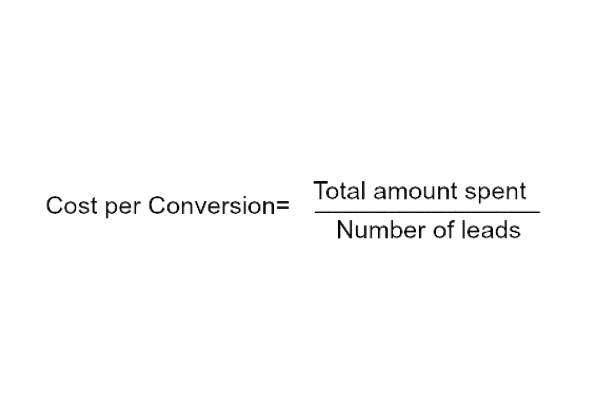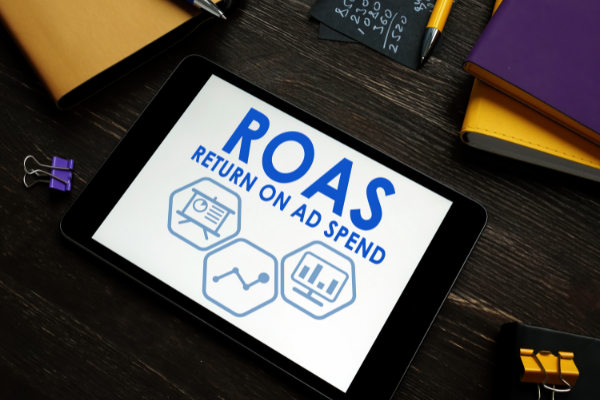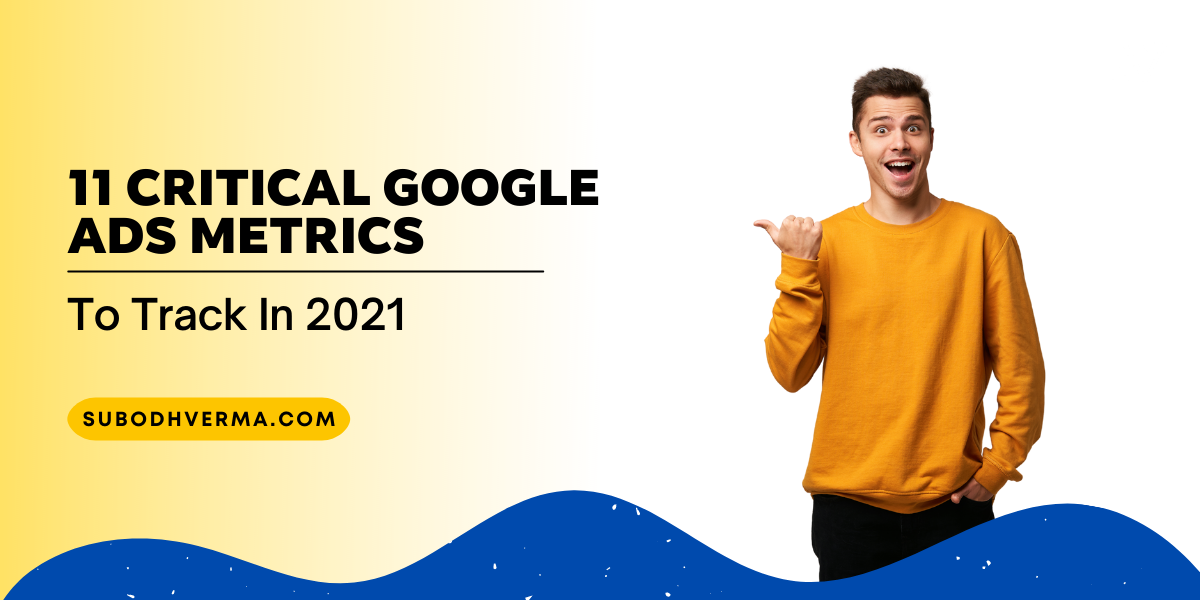There’s a lot of noise in the marketing world about what metrics to track. What is most important? Which ones will help you grow your business, and which ones are just filling out your spreadsheet?
In today’s digital economy, Google Ads are a critical part of any business. To succeed in the future, it is essential to track the Google Ads Metrics and stay ahead of the competition by analyzing trends.
But many marketers and advertisers are still unsure which metrics they should be tracking in Google Ads. With the introduction of new features such as Conversions, it can be easy for those with little experience or understanding of specific metrics to become overwhelmed and make mistakes.
In this post, I am sharing 11 Google Ads Metrics that all businesses should be tracking in 2021.
11 critical Google Ads Metrics To Track
You can easily track Google Ads metrics, and each metrics is critical in its own way. Just like with organic search metrics, there is no one ‘perfect’ set of parameters; they all depend on what you’re trying to achieve. That said, here is a list of the 11 Google Ads metrics I believe are the most crucial to track for paid advertising in 2021:
Clicks

Google Ads clicks are the starting point for any advertising campaign. Without them, keywords just sit there and do nothing for you. Making sure that your campaigns have enough quality traffic is half of what paid to advertise is all about, so tracking Google Ads clicks as accurately as possible is essential.
Also read: 9 PPC Trends You Should Be Opting To Get Ahead In 2021
Cost Per Click (CPC)

Tracking cost per click allows you to set a budget cap on their campaigns, which means no matter how many people click on an ad, they can’t spend more than whatever number they’ve decided upon in advance. If you are paying $5 per click but only bringing in 100 visitors to your website for that same amount of money, then it might be time to drop your budget and set a lower cap.
Quality Score

Quality score is calculated on a scale of 1-10 for three primary factors that Google or other search engines measure when determining whether an ad is relevant to what users are searching for. Google Ads Quality Score keyword metrics can vary significantly. The higher your keyword’s quality score, the less you will typically pay per click, and the more often they’ll be displayed in response to search queries. Still, highly competitive terms tend to have lower-quality scores than low competition keywords or more specific long-tail phrases.
Conversion Rate

Conversion rate is the number of people who click-through an ad and visit a website divided by the number of people targeted by an ad and saw it (impression) multiplied by 100 to get a percentage. If 10 people see an ad and 5 of them click on it, but only 3 visit your website. As a result, you have a 60% conversion rate. As this statistic has not been made public by Google yet, several other metrics can be used to calculate conversion rates instead.
Cost per Conversion

Cost Per Conversion is another crucial metric since it’s necessary to pay attention to how much money is being spent and the quality of the visitors coming from those clicks. If you’re spending money on ads but aren’t seeing any conversions from those ads after a certain point, then all those clicks might not be worth it at the end of the day. In addition to tracking these events as accurately as possible with Google Analytics, you can also use the Search Funnels, and Conversion Optimizer features built into Google Ads to monitor conversions.
Bounce Rate
Bounce rate is the percentage of visitors who visit only one web page and then leave. It is a useful early indicator that something might be wrong with your site or that you need to change various elements on those pages, such as copywriting, layout, design, etc. If someone clicks on an ad about learning how to bake cookies and makes it halfway down the first page of search results before clicking back through to the Google Ads themselves and leaving immediately. Then they probably weren’t interested in what you had to offer – even if they didn’t click on any other ads during their search session.
Web Traffic
Web traffic measures the number of times visitors (unique and total) hit a web server; it is an important metric to determine how many people are visiting your site. Without any web traffic, it isn’t easy to justify investing in paid advertising like Google Ads or Facebook ads, as those visitors won’t translate into anything meaningful.
Click-Through Rate (CTR)
The Click-through rate measures click as a percentage of impressions. The percentage of people viewing the ad out of all those who saw it is an important metric that you must use together with other metrics such as cost per click and conversion rates to see whether their campaigns are successful.
Impression Share

Impression share is the percentage of times your ads were shown, relative to how many times they were available (i.e., not paused, closed, or filtered out by Ad Rank thresholds). If you’re spending money on Google Ads, but your impression share is low, then you either need to use more aggressive bid strategies or try using a different method for targeting your audience.
Total Conversion Value
Total conversion value considers the number of conversions (sales) generated by an ad group. It assigns values based on their average order totals multiplied by the traffic coming from all associated clicks with that ad group. It gives you a better idea of how much your ad campaigns and related traffic are worth and allows you to compare different ad groups with each other more easily.
Return on Ad Spend (ROAS)

Return on ad spends measures the total amount earned through conversions divided by the total amount spent – another critical metric, since it’s necessary to track the number of conversion events and their value to understand whether paid advertising efforts are paying off for an organization. ROAS can be calculated across multiple periods, allowing marketers to see whether particular campaigns or audience segments within campaigns are performing over a specified period. You can also use many additional Google Ads metrics outside those outlined above, including Site Links, Ad Groups, and Keywords.
Summing Up!
Google Ads metrics are just one piece of the puzzle for running successful digital campaigns. Still, they help you understand whether their ads are being viewed, clicked on by users and whether those people are converting into paying customers.
It allows you to optimize for better results in the future – if the ad campaigns aren’t giving them the desired business value after a few weeks have elapsed, there is plenty of room for improvement across all those metrics!
I hope you’ve found this blog post helpful. If there is anything I could do to support you, please don’t hesitate to reach out! It has been my pleasure to provide these insights on the critical metrics to look at in Google Ads for 2021 and how they can help your business grow and succeed online.
Until next time… Happy Marketing!
